-
 bitcoin
bitcoin $118548.520763 USD
3.67% -
 ethereum
ethereum $4352.564943 USD
4.79% -
 xrp
xrp $2.964058 USD
4.22% -
 tether
tether $1.000565 USD
0.05% -
 bnb
bnb $1028.372955 USD
1.46% -
 solana
solana $221.373507 USD
6.00% -
 usd-coin
usd-coin $0.999933 USD
0.02% -
 dogecoin
dogecoin $0.248633 USD
6.85% -
 tron
tron $0.341444 USD
2.38% -
 cardano
cardano $0.852946 USD
5.82% -
 hyperliquid
hyperliquid $47.869306 USD
6.15% -
 chainlink
chainlink $22.561476 USD
6.01% -
 ethena-usde
ethena-usde $1.001258 USD
0.05% -
 avalanche
avalanche $30.660000 USD
2.06% -
 stellar
stellar $0.400917 USD
9.76%
How do I switch networks (e.g., Ethereum, Polygon) in my Coinbase Wallet?
Switching networks in Coinbase Wallet lets you access different blockchains like Ethereum, Polygon, or BNB Chain, but always confirm the network to avoid fund loss.
Sep 29, 2025 at 03:19 pm
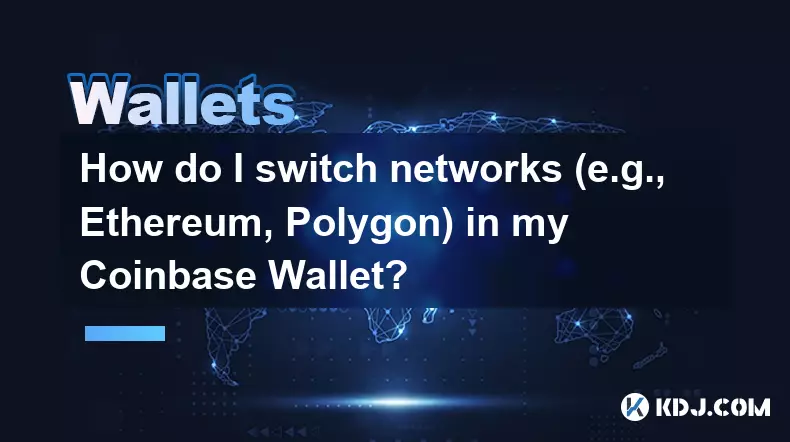
Understanding Network Switching in Coinbase Wallet
1. Navigating between different blockchain networks in Coinbase Wallet is essential for users who engage with various decentralized applications and tokens across ecosystems. Each network, such as Ethereum, Polygon, BNB Chain, or Arbitrum, operates independently with its own transaction fees, speed, and supported assets. Being able to switch ensures access to the right dApps and cost-effective transactions.
2. The wallet automatically defaults to Ethereum Mainnet upon setup, but users can manually add and toggle between other EVM-compatible chains. This flexibility allows seamless interaction with cross-chain DeFi platforms, NFT marketplaces, and gaming ecosystems without needing multiple wallets.
3. Before switching, ensure you understand the gas token of the target network—ETH on Ethereum, MATIC on Polygon, BNB on Binance Smart Chain. Sending assets using the wrong network can result in permanent loss. Always verify the network before confirming any transaction.
How to Change Networks Step by Step
1. Open the Coinbase Wallet app and tap on the network indicator located at the top of the screen, usually showing 'Ethereum' or another active chain.
2. A dropdown menu will appear listing available networks. Select the desired network such as Polygon, Optimism, Arbitrum, or Base.
3. If the network isn’t listed, tap “Add a network” and choose from popular presets or enter custom RPC details manually. For Polygon, the preset is typically available by default.
4. Once selected, the interface updates to reflect the new network. Your wallet address remains the same, but the displayed assets and transaction history are now specific to that chain.
5. Confirm the change by checking the network label at the top. You can now interact with dApps or send tokens native to that network.
Managing Custom Networks and Security
1. Advanced users may need to connect to less common networks not included in the default list. In such cases, manually adding a network requires accurate configuration: chain ID, RPC URL, currency symbol, and block explorer URL.
2. Misconfigured settings can expose users to phishing attacks or failed transactions. Always source network details from official project documentation or trusted community channels.
3. After adding a custom network, test with a small transaction before moving significant funds. Monitor the transaction on the associated block explorer to confirm successful processing.
4. Remove unused custom networks periodically to reduce clutter and minimize accidental usage. This can be done through the network management section under settings.
Frequently Asked Questions
Q: Can I lose funds by switching networks?A: Yes, if you send tokens to the correct address but on the wrong network, those funds may become inaccessible. Always double-check the active network before initiating transfers.
Q: Why doesn’t my token appear after switching networks?A: Tokens are network-specific. If a token exists on Ethereum but not on Polygon, switching to Polygon won’t display that asset. You may need to bridge the token to view it on another chain.
Q: Does switching networks cost gas?A: No, changing the network in the wallet interface is free. However, any subsequent transaction on the new network will require gas in that network’s native token.
Q: Are all dApps compatible with every network in Coinbase Wallet?A: No, decentralized applications are built for specific chains. Ensure the dApp supports the network currently active in your wallet before connecting.
Disclaimer:info@kdj.com
The information provided is not trading advice. kdj.com does not assume any responsibility for any investments made based on the information provided in this article. Cryptocurrencies are highly volatile and it is highly recommended that you invest with caution after thorough research!
If you believe that the content used on this website infringes your copyright, please contact us immediately (info@kdj.com) and we will delete it promptly.
- BlockDAG, DOGE, HYPE Sponsorship: Crypto Trends Shaping 2025
- 2025-10-01 00:25:13
- Deutsche Börse and Circle: A StableCoin Adoption Powerhouse in Europe
- 2025-10-01 00:25:13
- BlockDAG's Presale Buzz: Is It the Crypto to Watch in October 2025?
- 2025-10-01 00:30:13
- Bitcoin, Crypto, and IQ: When Genius Meets Digital Gold?
- 2025-10-01 00:30:13
- Stablecoins, American Innovation, and Wallet Tokens: The Next Frontier
- 2025-10-01 00:35:12
- NBU, Coins, and Crypto in Ukraine: A New Yorker's Take
- 2025-10-01 00:45:14
Related knowledge

How to get the Trust Wallet browser extension?
Oct 01,2025 at 12:37am
How to Access the Trust Wallet Browser Extension1. Visit the official Trust Wallet website through a secure internet connection. Navigate to the downl...
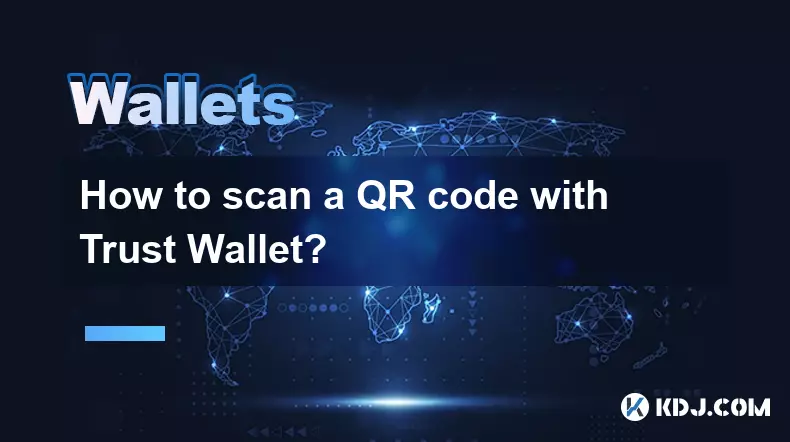
How to scan a QR code with Trust Wallet?
Oct 02,2025 at 03:37pm
Understanding QR Codes in Trust Wallet1. QR codes are widely used in cryptocurrency applications to simplify transaction processes. Trust Wallet lever...
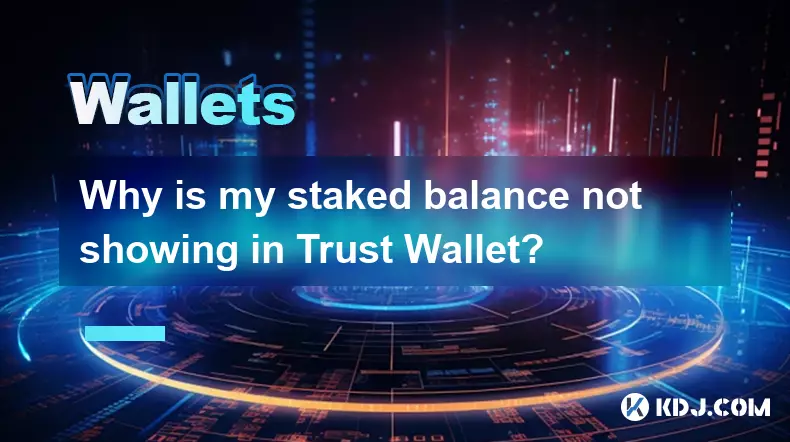
Why is my staked balance not showing in Trust Wallet?
Oct 01,2025 at 12:54am
Understanding Decentralized Exchanges in the Crypto Ecosystem1. Decentralized exchanges (DEXs) operate without a central authority, allowing users to ...
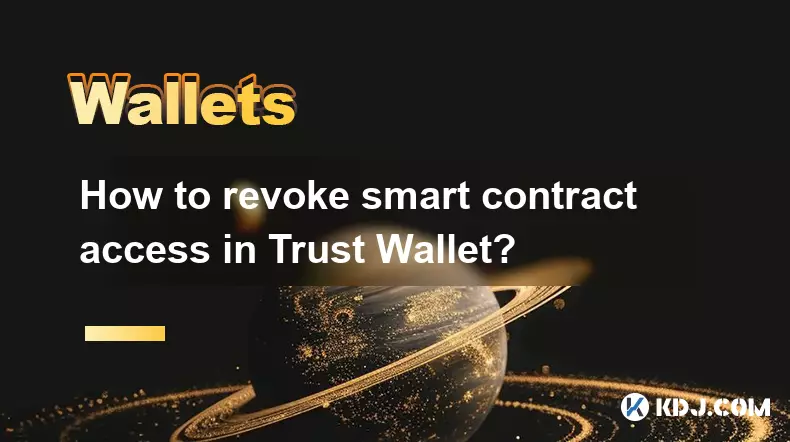
How to revoke smart contract access in Trust Wallet?
Oct 01,2025 at 12:54pm
Understanding Smart Contract Access in Trust Wallet1. Smart contracts are self-executing agreements built on blockchain networks, commonly used in dec...
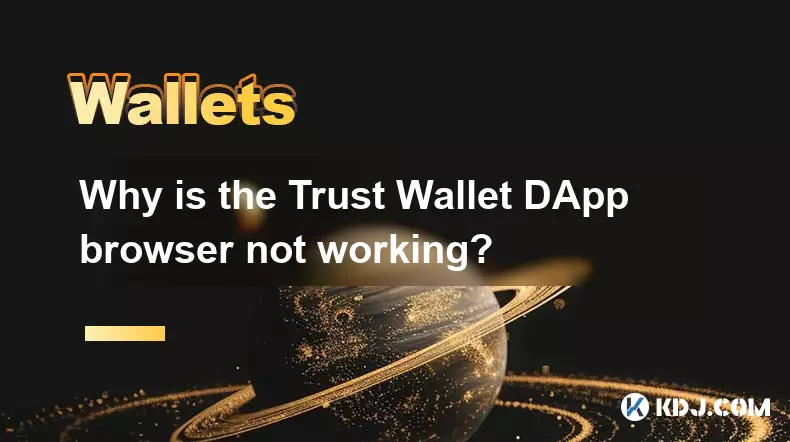
Why is the Trust Wallet DApp browser not working?
Oct 01,2025 at 05:36am
Common Causes of Trust Wallet DApp Browser Issues1. The DApp browser within Trust Wallet may fail to load due to connectivity problems. A weak or unst...
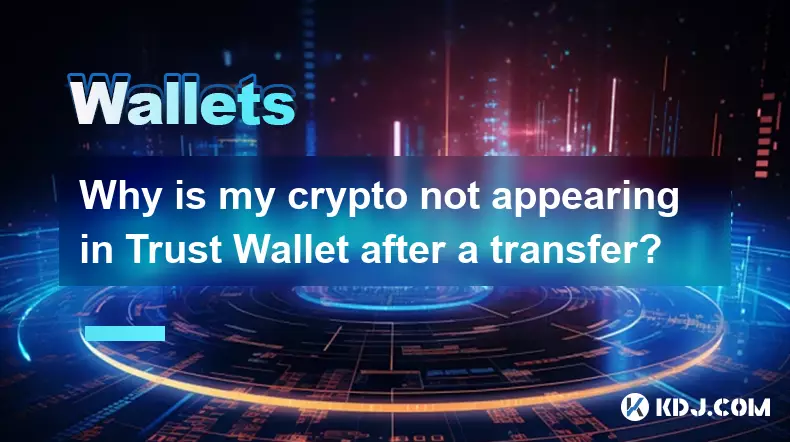
Why is my crypto not appearing in Trust Wallet after a transfer?
Oct 01,2025 at 04:36am
Common Reasons Your Crypto Doesn’t Appear in Trust Wallet1. The transaction is still pending on the blockchain. Blockchain confirmations can take time...

How to get the Trust Wallet browser extension?
Oct 01,2025 at 12:37am
How to Access the Trust Wallet Browser Extension1. Visit the official Trust Wallet website through a secure internet connection. Navigate to the downl...

How to scan a QR code with Trust Wallet?
Oct 02,2025 at 03:37pm
Understanding QR Codes in Trust Wallet1. QR codes are widely used in cryptocurrency applications to simplify transaction processes. Trust Wallet lever...

Why is my staked balance not showing in Trust Wallet?
Oct 01,2025 at 12:54am
Understanding Decentralized Exchanges in the Crypto Ecosystem1. Decentralized exchanges (DEXs) operate without a central authority, allowing users to ...

How to revoke smart contract access in Trust Wallet?
Oct 01,2025 at 12:54pm
Understanding Smart Contract Access in Trust Wallet1. Smart contracts are self-executing agreements built on blockchain networks, commonly used in dec...

Why is the Trust Wallet DApp browser not working?
Oct 01,2025 at 05:36am
Common Causes of Trust Wallet DApp Browser Issues1. The DApp browser within Trust Wallet may fail to load due to connectivity problems. A weak or unst...

Why is my crypto not appearing in Trust Wallet after a transfer?
Oct 01,2025 at 04:36am
Common Reasons Your Crypto Doesn’t Appear in Trust Wallet1. The transaction is still pending on the blockchain. Blockchain confirmations can take time...
See all articles










































































